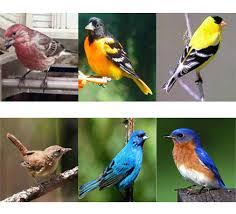‘It wasn’t clear whether this kind of learning — where knowledge of a pattern informs understanding about the categories that make up the patterns — was unique to humans and language, or is a more general process shared with other animals,’ says Timothy Gentner. ‘We showed that this kind of learning is shared with, at least, songbirds. When birds learn to recognize patterns of song elements, they get a big boost in their ability to categorize those elements.’
Starlings’ songs consist of short, stereotyped patterns of simple notes grouped into ‘motifs’ and longer, well-defined sequences of motifs organized into bouts. Those motifs fall into one of four categories: whistles, warbles, rattles, or high frequencies. Gentner and his colleagues wanted to find out how patterns influence starlings in their ability to categorize those sounds.
Jordan Comins, lead author of the study, trained four starlings to differentiate complex auditory patterns following the form AABB and BBAA from those that followed the form ABAB and BABA, where A and B denote natural motif categories of warbles and rattles. The researchers trained a second group in the same way, except that they shuffled the patterns.
The researchers found that the birds presented with clear patterns of sounds were at a big advantage over the other group in their ability to correctly categorize the motifs they’d heard. The findings show that songbirds rely on patterns in much the same way that people do.
‘We ‘hear’ words, not sequences of speech sounds,’ Gentner says. ‘While it is tempting to think that this is a uniquely human way of perceiving the world, it is not.’
Birds may not have language, but they still can teach us much about the biological and psychological mechanisms that make language and language learning possible, the researchers say. Having identified this basic form of shared top-down learning, Gentner’s team will now explore more subtle details of the perceptual categories and patterns in the birds to see how precisely they match human speech acquisition. They will also examine the extent to which pattern knowledge shapes the representation of complex vocal signals in the songbird brain.
Source: Science daily
N.H.khider

